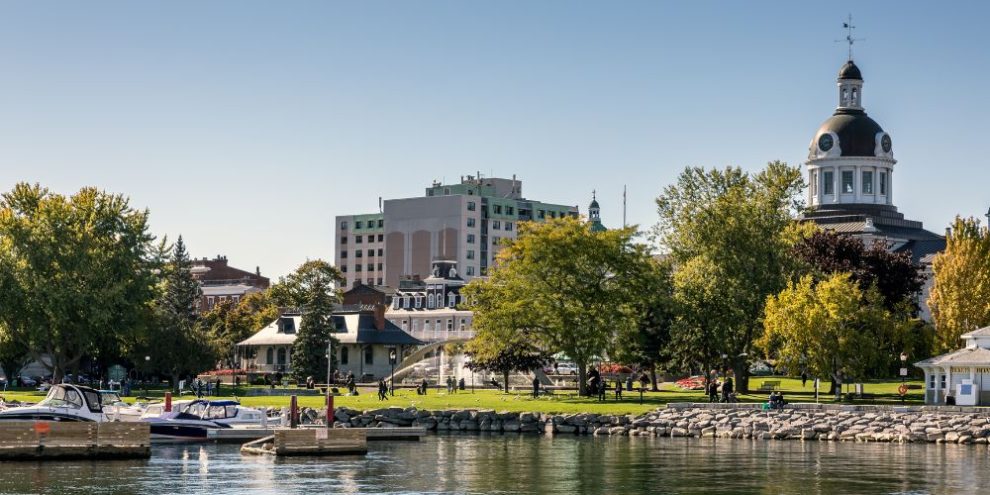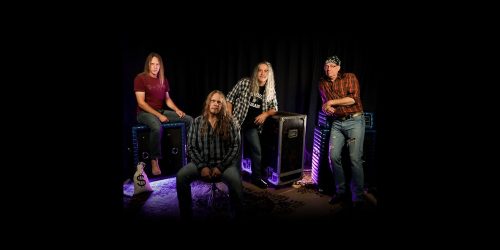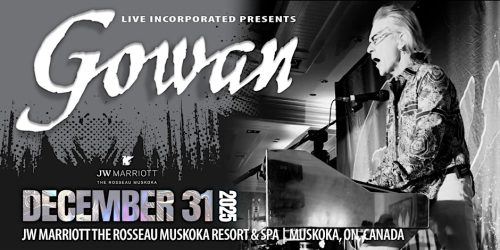Ontario Towns with a Rock 'n' Roll Legacy

Ontario’s music scene has always punched above its weight. From legendary rock acts to iconic venues, this province has birthed some of Canada's biggest musical moments—many of them outside the major metro hubs.
Whether you're a music history buff or just love a good hometown-to-headliner story, these cities and towns in Ontario deserve a spot on your radar.
Snag Our Newsletter
London: Canada’s First UNESCO City of Music
In 2021, London became the first Canadian city to earn the title of UNESCO City of Music—and for good reason. It's the hometown of Guy Lombardo (big band leader of the Royal Canadians), punk icons The Demics, and award-winning rocker Olenka Krakus. But its modern music rep is just as strong.
London’s legendary venue, Call the Office, has hosted acts like The Tragically Hip, Radiohead, and Green Day before they hit it big. With a thriving local scene and the annual London Music Awards spotlighting talent, the city continues to be a launchpad for indie and rock musicians alike.
Hamilton: The Steeltown Sound
Hamilton has long been an underdog in Canada’s rock music history—but that grit is part of its charm. Known as “Steeltown,” the city has given rise to a raw, authentic sound that shaped artists like Teenage Head, one of Canada’s pioneering punk bands.
Today, venues like The Casbah, This Ain’t Hollywood (now defunct but legendary), and Bridgeworks keep the spirit alive. Hamilton is also home to the Juno Award-winning rock band Arkells, named after a street near McMaster University where the members once lived.
Oshawa: The Motor City of the North
Often dubbed the “Detroit of Canada” for its automotive roots, Oshawa has also quietly built a legacy in the Canadian rock scene. It has long been a hotbed for local talent.
Oshawa’s bar scene has historically nurtured rock and metal, with venues like The Biltmore Theatre and The Atria serving as important stages for up-and-coming bands. Even punk legend Iggy Pop played a surprise show in Oshawa in the '90s — cementing its place in Canada’s gritty rock underworld.
Kingston: Birthplace of The Tragically Hip
You can’t talk Canadian rock without mentioning The Tragically Hip … and you can’t talk about The Hip without talking about Kingston. The band’s roots are woven into the city’s identity, and Gord Downie’s lyrics often drew on Canadian geography, history, and small-town imagery.
Kingston celebrates its rock royalty with statues, murals, and The Ale House, where the band played several now-legendary gigs. The city also hosts The Kick & Push Festival and has a deep connection to Queen’s University, where many musicians got their start.
Toronto: The Main Stage
Sure, it’s the obvious one, but Toronto’s influence can’t be overlooked.
Yonge Street was once called “the longest street in the world,” and it was also Canada’s original rock 'n' roll highway. In the '60s and '70s, clubs like Le Coq d'Or and The Colonial Tavern hosted future legends like Ronnie Hawkins, The Band, and Rush.
Today, Toronto remains a major music industry hub, but it’s also home to iconic rock venues like The Horseshoe Tavern, Lee’s Palace, and Massey Hall. From Neil Young and Joni Mitchell to Billy Talent and Metric, the city has helped define Canadian rock for generations.
Peterborough: A Hidden Gem
Peterborough may be best known for its lakes and Trent University, but it has a strong musical backbone, too. The city has nurtured countless indie and rock acts through venues like The Red Dog (now closed), one of the oldest bars in Canada to host live music.
Kris Labelle, a local promoter, brought bands like Sum 41 and Billy Talent to town early in their careers, giving Peterborough a rep as a great testing ground for new talent. Its proximity to Toronto has kept it tightly connected to the larger Ontario music scene.
St. Catharines: Punk, Metal, and More
This Niagara-region city boasts a surprisingly rich music scene. Alexisonfire and City and Colour both trace their roots to St. Catharines, and the area has long been fertile ground for post-hardcore, punk, and alt-rock bands.
Detour Music Hall and Warehouse have been essential to the local scene, giving artists room to experiment and grow. Today, the city continues to support heavy and alternative music with underground shows and festivals.
Omemee: Neil Young’s “Town in North Ontario”
Population: just over 1,200. Significance: massive.
Neil Young spent part of his childhood in the tiny village of Omemee, nestled between Peterborough and Lindsay. He immortalized it in “Helpless,” singing about “a town in north Ontario.” Though technically not northern, Omemee left a lasting imprint on Young’s early life and musical identity.
Today, fans still visit the area for a taste of the landscape that shaped one of the greatest songwriters in rock history. In 2017, Neil even returned to Omemee for an intimate live-streamed concert at Coronation Hall.
Sarnia: Where Kittie Started a Metal Movement
In the late ’90s, an all-female metal band from Sarnia named Kittie exploded onto the scene with their debut album Spit—and they were still teenagers. The group shattered expectations and carved out space for women in heavy music, both in Canada and globally.
Though the genre is heavier than mainstream rock, Kittie’s legacy in Canadian music is undeniable. Their story starts in this industrial city on Lake Huron.
Orillia: Gordon Lightfoot’s Hometown
Long before he became Canada’s “Bard of the Great Lakes,” Gordon Lightfoot was a kid growing up in Orillia, a charming city nestled between Lake Couchiching and Lake Simcoe. It’s where he sang in church choirs, learned piano, and first picked up a guitar—laying the foundation for a career that would span decades and influence generations.
His songs, like “If You Could Read My Mind” and “The Wreck of the Edmund Fitzgerald,” are staples of Canadian storytelling, and his love for Ontario’s natural landscapes often shone through in his lyrics.
Orillia honours Lightfoot in many ways:
- A bronze statue of him sits in Tudhope Park.
- The city renamed its iconic arts venue the Orillia Opera House – Gordon Lightfoot Auditorium in his honour.
- There’s an annual Lightfoot Days Festival celebrating his legacy and connection to the town.
Ajax: Forever Linked to Sum 41
Ajax isn’t just where Sum 41 formed—it’s in their DNA. From high school band practice to naming their label after a local theatre, the town shaped their early identity. The members have spoken about suburban life, boredom, and rebellion—key themes in their early 2000s pop-punk sound.
They even shot early music videos around Ajax before blowing up internationally with “Fat Lip.”
Lightfoot remained closely tied to Orillia throughout his life, making it one of the most significant towns in Canada’s music history.
Scarborough: Barenaked Ladies & Suburban Soundtracks
Scarborough isn’t just a suburb … it’s where Barenaked Ladies frontman Ed Robertson grew up, and the band’s quirky, relatable lyrics often reflected suburban life in Ontario. Their breakout moment? A spontaneous street performance in Scarborough that led to early buzz and a loyal local following.
More recently, The Weeknd and Scarborough-native rapper NAV have put the area in the global spotlight – though they're outside of the rock genre, they’ve carried Scarborough's underdog spirit into international fame.
Culturally diverse, rough around the edges, and deeply rooted in community, Scarborough shaped artists who speak to everyday Canadian life with humor, honesty, and edge.
The Sound of a Place
These towns didn’t just raise musicians—they inspired lyrics, shaped identities, and continue to honour the music they helped make possible. For fans of Canadian rock, they’re more than dots on a map—they’re landmarks in the soundtrack of the country.
Snag Our Newsletter
Hit that button like you’re pressing play on your favourite track. get exclusive content, stories, and news.







